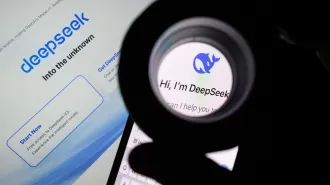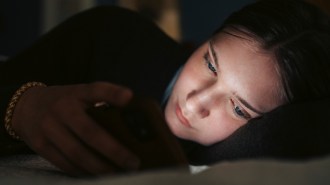- More than 2 years ago
In the age of desktop publishing, resourceful forgers can readily produce convincing copies of documents such as checks and prescriptions. Now, designers of laser color printers are fighting back with a new antiforgery technology.

Researchers at Xerox in Webster, N.Y., announced last week that they have developed a way to use laser color printers to embed a secondary image–resembling a hologram–in the glossy surface of a document.
Because photocopiers and scanners can’t reproduce the secondary image, this Glossmark technology offers a novel and easy way of marking original documentation and preventing forgery, comments Nicholas George of the Institute of Optics at the University of Rochester in N.Y.
The technique exploits what is actually a common flaw in color laser printing. Known as differential gloss, this bothersome distraction can interfere with how people see an image. Varying densities of ink give different parts of an image a shiny or matte finish. A person’s dark hair will look shiny, for example, while a light T-shirt will have a duller appearance.
The varying gloss imparts a “ghost image,” only visible at certain angles, says Xerox researcher Shen-ge Wang. It was while Wang and his colleagues Chu-heng Liu and Beilei Xu were trying to reduce differential gloss that they realized it might be put to good use.
A color laser printer works by applying color dots–either yellow, cyan, magenta, or black–to a page. By depositing dots of various sizes and intensities, the printer can smoothly render thousands of colors in what’s known as a halftone image.
The key to making a Glossmark is “controlling the halftone structure–how the tiny ink dots are distributed on the page,” says Liu. He and his colleagues wrote software to manipulate the amount of gloss on a print to embed secondary images, such as a company logo or a bar code.
“[The ink] has to be made into a regular, very-fine-scale pattern, so when the light hits it, it’ll diffract colors in different ways,” George says. “It’s operating on the holographic principle.”
He adds that making Glossmarks is much simpler than producing rainbow holograms of the type that already appear on credit cards and concert tickets.
So far, Wang and his colleagues have only made Glossmarks using a high-end color laser printer. But they suggest that the process could work on less expensive printers and be used for supermarket coupons, government-issued ID cards, legal papers, or even kids’ craft projects.
According to George, however, laser printer ink wouldn’t be durable enough for legal tender.
****************
If you have a comment on this article that you would like considered for publication in Science News, send it to editors@sciencenews.org. Please include your name and location.





